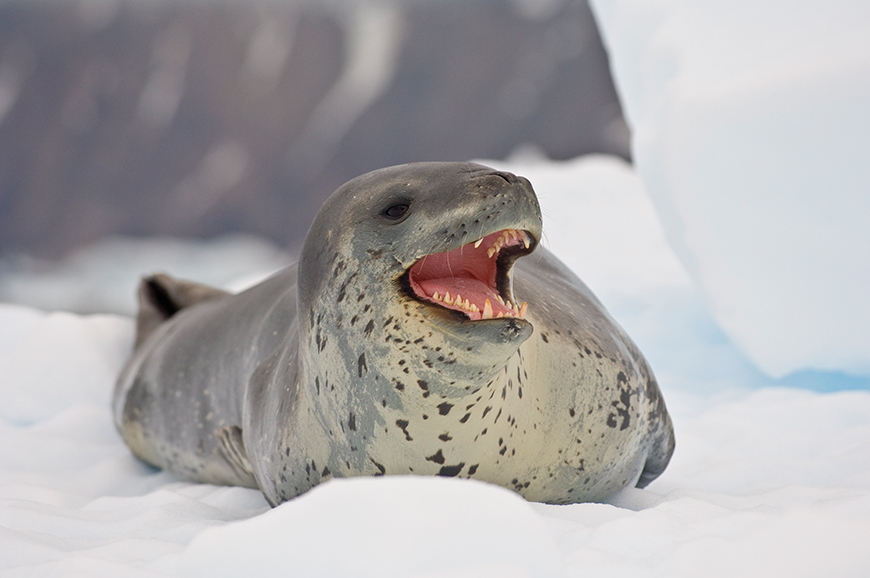Leopard seal is a large earless seal of the Antarctic that has gray spots on the throat and sides. Earless seals lack visible earflaps, but they do have ears and excellent hearing. The leopard seal has a streamlined body with a large head and a slender neck. It has gaping jaws with long canine teeth. The leopard seal is dark gray on the back and silvery pale on the belly.

Female leopard seals grow larger than males. Females reach nearly 12 feet (3.7 meters) long. They can weigh more than 1,100 pounds (500 kilograms). Males reach nearly 10 feet (3 meters) long. They can weigh more than 650 pounds (295 kilograms).
Leopard seals spend most of the year on and around the Antarctic sea ice. In winter months, young animals move north to islands in the Southern Ocean. They also may travel to beaches in Australia, South Africa, and South America.
The leopard seal is a strong hunter. It is a top predator (hunting animal) in the food chain. In spring and summer, the leopard seal feeds mostly on other seals and penguins. It typically seizes such prey from beneath the water and thrashes violently to rip away chunks of flesh. During winter, the leopard seal feeds mostly on fish and krill (shrimplike animals). It captures krill by straining water through its molar (back) teeth. Leopard seals are sometimes eaten by killer whales.
Leopard seals are solitary except when they breed. Both males and females use a variety of calls to attract mates. Females “sing” for only a few days. Males sing throughout the breeding season. Females give birth to a single pup between October and December. Pups nurse for only a few weeks.
